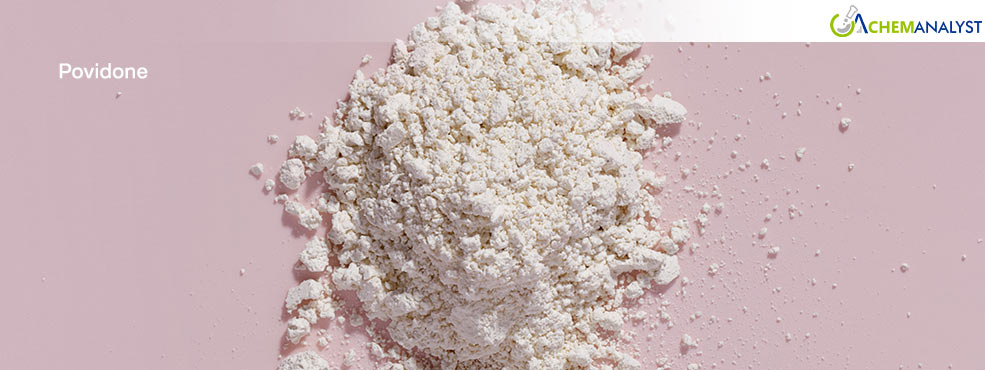Welcome To ChemAnalyst

Across the U.S. market, the import prices of povidone, one of the most sought-after polymers used in the food, cosmetics, and pharmaceutical industries, continue to decline as quarter 2 begins and remain weak even in the month of May as well. Increased global oversupply, deteriorating downstream demand, and competitive global trade patterns continue to be dominant factors in the pricing scenario of povidone.
Current market projections show that the chronic oversupply is the main cause of the falling povidone prices. The manufacturers in Asia and North America, particularly India and China, have had high production levels even as there has been a slowdown of the demand in the end-use sector. This supply glut has led to rising inventory levels, pressuring suppliers to lower povidone prices to clear excess stock. Producers are increasingly struggling to deal with excess inventories as demand continues to be lackluster. This has provoked aggressive pricing by many regions," noted a senior market analyst with a chemical market intelligence company.
On the downstream sector side, during Q2 2025, the pharmaceutical sector, which uses povidone extensively for tablet binding and film coating, reduced its procurement activities. Because of economic volatility and the late approval of new drugs with povidone by regulatory authorities, most drug firms have adopted conservative stockpiling tactics.
Furthermore, leading pharmaceutical firms are shifting to localized supply chains, which is reducing the level of povidone imported in bulk from Asia. The American povidone market has seen short-term demand distortions due to this shift, despite its long-term resilience advantages. International trade and competitive imports intensify price pressure. Competitive imports, particularly from Asian producers, are another issue for the American povidone industry. As a result, downstream consumers across the key importing nations such as the North American region as well continue to choose less expensive imported povidone substitutes since international freight rates are staying the same. As a result, domestic suppliers are losing ground and prices are continuing to decline.
At the same time, with the improved cost of feed n- butanediol, the orders anticipated to arrive from the overseas market across the producing nations are likely to drop thereby causing a halt in production and increased inventory level at the warehouses by the suppliers and manufacturers. As a result, traders further lowered their export prices of already stocked-up inventories thereby supporting increased imports availably for the us market.
As a result, various market analysts expect the bearish tone in the povidone sector to persist through the end of Q2, barring unexpected demand recovery or supply-side disruptions. Although some foresee a seasonal rebound in povidone usage by late Q3 due to heightened pharmaceutical production cycles, short-term sentiment remains subdued.
Without decisive interventions—such as strategic production cuts or a significant uplift in demand—povidone prices in the U.S. are projected to stay near historical lows through May and into the summer months.
We use cookies to deliver the best possible experience on our website. To learn more, visit our Privacy Policy. By continuing to use this site or by closing this box, you consent to our use of cookies. More info.
